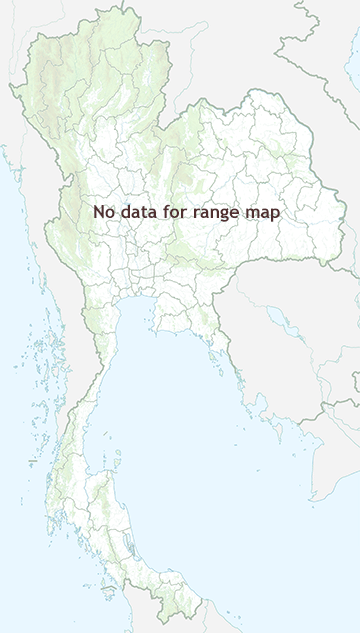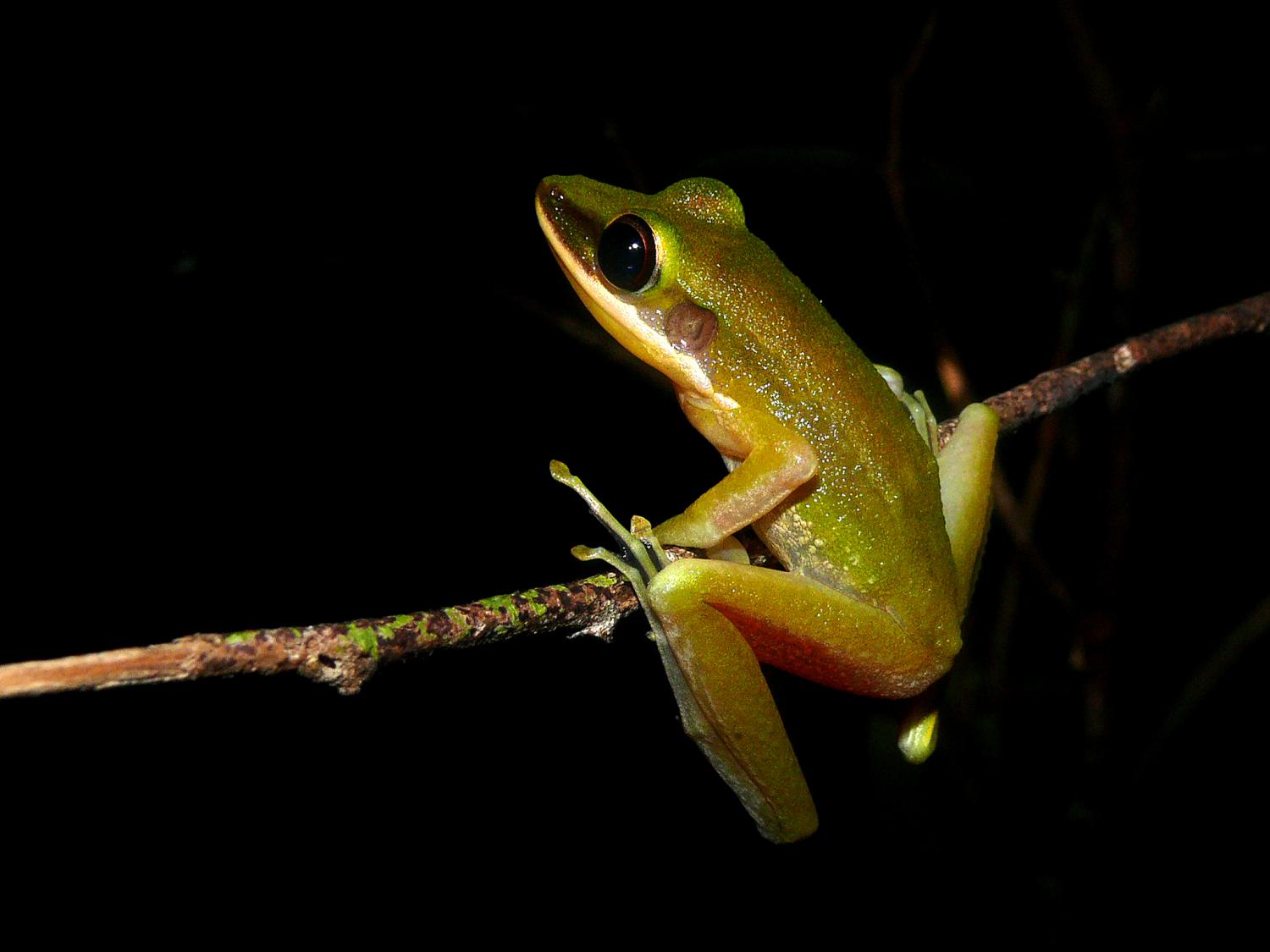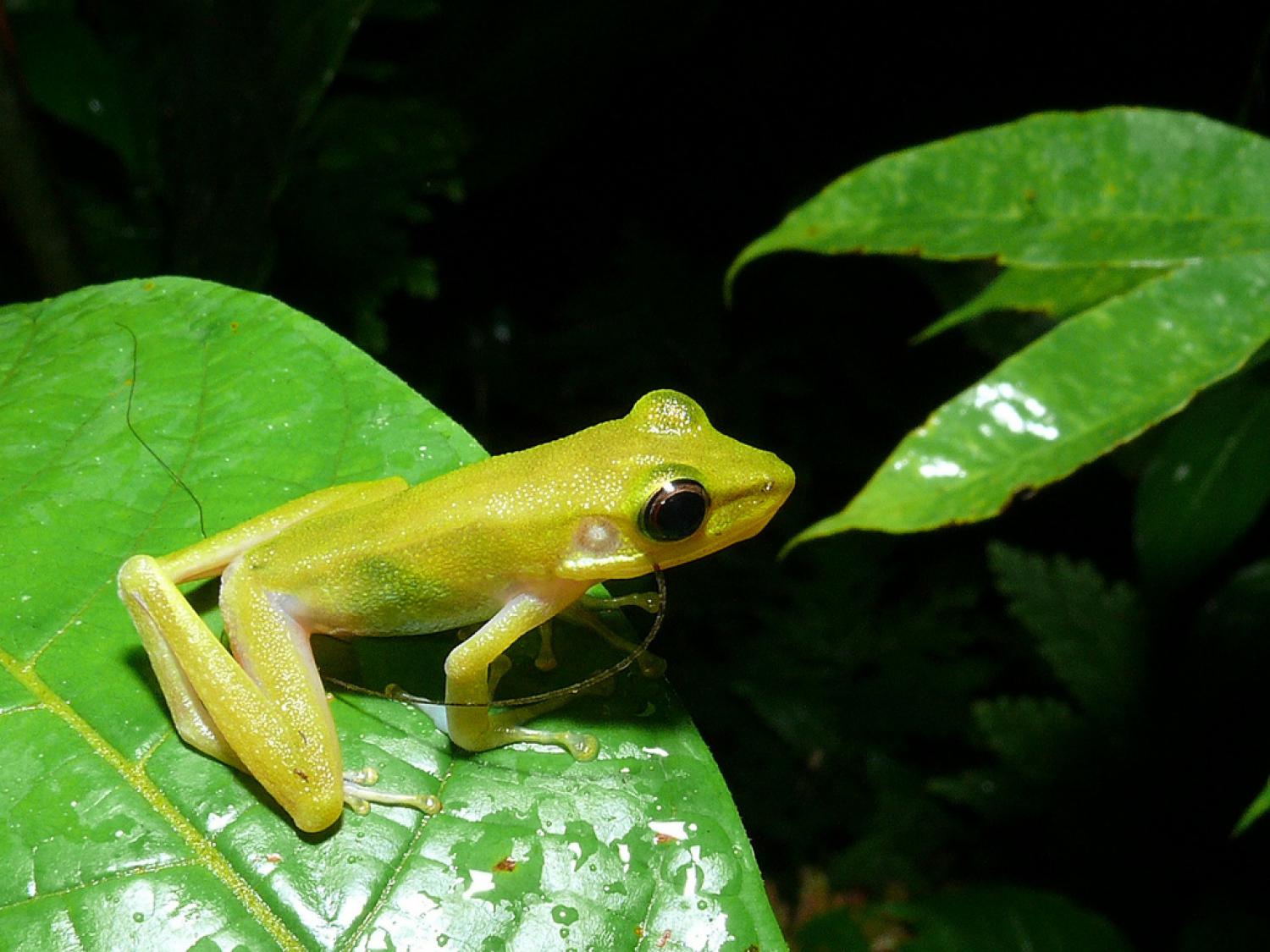Species of Thailand
Copper-cheeked frog
Hylarana raniceps
Wilhelm Karl Hartwich Peters, 1871
Hylarana raniceps, also known as the copper-cheeked frog, white-lipped frog, or Peters' Malaysian frog, is a species of true frog in the genus Hylarana. It is endemic to Borneo, including Brunei Darussalam, Kalimantan (Indonesia), and Sarawak (Malaysia), although it is likely to occur more widely. Previously mixed with Hylarana chalconota (treated as a synonym or subspecies) and believed to have much wider distribution, its range was delimited to Borneo in the revision of "Hylarana chalconota" complex by Robert Inger and colleagues in 2009.
Description
Hylarana raniceps are relatively small frogs: adult males measure 28 - 34 mm and females 33 - 42 mm in snout–vent length. Colouration is mostly green, sometimes with brown back. The snout is long and pointed. Finger and toe tips have adhesive disks. The thighs may be reddish undersides. It resembles Hylarana megalonesa but is much smaller. Tadpoles are conspicuous with dark markings and red gills on light brown to yellow background; presumably they are poisonous.
Habitat
Hylarana raniceps inhabits a broad range of lowland primary and secondary rainforest habitats. It breeds in ponds, intermittent streams, and quiet side pools of streams. Males call in small groups from twigs and vegetation 0.5–1.5 m above the ground.
This article uses material from Wikipedia released under the Creative Commons Attribution-Share-Alike Licence 3.0. Eventual photos shown in this page may or may not be from Wikipedia, please see the license details for photos in photo by-lines.
Scientific classification
- Kingdom
- Animalia
- Phylum
- Chordata
- Class
- Amphibia
- Order
- Anura
- Family
- Ranidae
- Genus
- Hylarana
- Species
- Hylarana raniceps
Synonyms
- Polypedates raniceps, Wilhelm Karl Hartwich Peters (1871)
- Hydrophylax raniceps, Wilhelm Karl Hartwich Peters (1871)
- Rana raniceps, Wilhelm Karl Hartwich Peters (1871)
Conservation status

Least Concern (IUCN3.1)
Photos
Please help us review our species pages if wrong photos are used or any other details in the page is wrong. We can be reached via our contact us page.
Range Map



